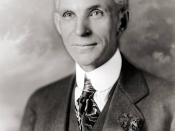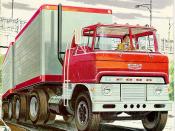Introduction - The Evolution of Management Theory
During the industrial revolution that took place in Western Europe and North America in the 18th century; various machines were built and the economy which was based on manual labor was replaced by machines. Then factories of large scale in the garment sector, automobile sector etc emerged rapidly and the need to increase organizational efficiency and effectiveness has guided the evolution of management theory till today. Managers, theorists, researcher searched for way of how to utilize their resources to the maximum and thereby attain efficiency and effectiveness.
Pre-Classical Management Thought
In the pre-classical era, that is during the emerge of various mass production factories after the Industrial revolution, there were two men most responsible for destroying the Old England and launching the world towards industrialization. Adam Smith brought about the revolution in economic thought and James Watt's steam engine provided cheaper power that revolutionized English commerce and industry.
In doing so, they also laid the foundation for modern notions of business management theory and practice.
According to Smith, division of labor provided managers with the greatest opportunity for increased productivity. Recognized as Watt's greatest breakthrough, in 1971 he developed a steam engine. This made the engine more adaptable to factory uses as the engine replacing water wheel power for grinding grain, driving textile machines, and operating bellows for iron works. In 1800 the sons of Boulton and Watts took over the management of the company and instituted one of the first complete applications of scientific management.
Pre-Classical Contributors
Adam Smith
He compared the relative performance of two different manufacturing methods. The first was similar to crafts-style production, in which each worker was responsible for all of the 18 tasks involved in producing a pin. The other had each worker performing only 1 or...



Good work!
Very informative and good read!
0 out of 0 people found this comment useful.